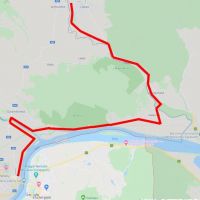Cross-border rescue cooperation between Austria and the Czech Republic
Policy-making | 28 October 2020
Policy-making | 28 October 2020
It entered into force in 2016 and is still a pioneer in Europe – the state treaty that allows cross-border cooperation between Austrian and Czech ambulance services. Siegfried Weinert from NOTRUF NIEDERÖSTERREICH answers questions about exemplary cooperation and shows how EDM can benefit from it.
Siegfried Weinert is a back-office staff at Notruf NÖ dealing with “special projects”. He played a significant role in the development of bilateral cooperation agreements between Lower Austria and the Czech districts. His presentations in neighboring countries sparked discussions on further bilateral agreements. In 2017, he was awarded the EMS10 Award by the prestigious American Journal of EMS for his work in the framework of Austro-Czech cross-border ambulance service cooperation. His efforts in this area have also been honored by the South Moravian Rescue Service.
Interview with Siegfried Weinert, NOTRUF NÖ
Why is a state contract needed for cross-border ambulance cooperation?
Ultimately, this is about legal certainty for those who engage in cross-border activity. The State Treaty allows for the partial repeal of national health legislation (Law on Doctors, Law on Ambulances, Law on Drugs, …) and thus eliminates the need for complicated legal adaptation of the relevant legislation. As a result, doctors and paramedics can operate in the neighboring country according to the rules of their own country (all competences, driving licenses, etc. are mutually recognized without reservation).
The conclusion of public contracts falls within the exclusive competence of the governments of the states. Under the framework agreement, the state contract authorizes the governments of each province or district to conclude bilateral agreements in the form of cooperation agreements for the detailed elaboration of activities.
Regional cooperation agreements (based on or referring to the framework agreement) define the individual sub-areas and cover the existing structures of the provinces or districts.
How do the people of the border region of Lower Austria and South Moravia / South Bohemia / Vysocina benefit from the cross-border cooperation of ambulance services?
By organizing the resources currently available on both sides of the border into a digital network and transmitting (real-time) GPS data, the rescue control center will propose a rescue unit to be deployed – whether it is a Lower Austrian or a Czech rescue unit. This will ensure that the rescue unit that arrives on the scene as quickly as possible is sent to those affected, regardless of nationality.
Who / What is needed to establish such cross-border ambulance cooperation?
Officially, documents and signatures are needed – but in reality, we also need people who have set themselves the common goal of providing the best possible preclinical emergency care in border areas. All this requires the will of the states concerned and mutual trust in each other’s health systems as a solid foundation. Negotiating delegations create a “live” work that is flexible to implement. Politicians and experts from the relevant regional governments (provinces, districts) should work in a solution-oriented way and should not be allowed to be deterred by “killer” arguments (eg language barriers). The transfer of data relevant to the rescue also requires a web-based platform that complies with the “Support Requirements” and “Provision of Support” principles of the Framework Agreement. In addition, simple and clear structures are needed for backup operations and communication. Nor should the importance of caring for operational and social networks be underestimated.
What can EDM learn from this exemplary collaboration?
The fact that cross-border co-operation is possible in the field of emergency ambulance services (and also in health care – example: Gmünd / Ceske Velenice) and does not require comprehensive legislation, but can be implemented in a framework agreement on almost 11 pages.
How has the current COVID-19 pandemic affected the cooperation of emergency services?
Not affected at all! The care / transportation of Covid-19 patients does not fall into the agreed emergency categories. Through close cooperation between Notruf NÖ and the Czech Embassy in Vienna, the connection was ensured 24/7.
In order to limit travel, the physical extent of the closures ordered at the border crossings (closures with concrete blocks, sliding grids, police cars, etc.) could thus be checked quickly and easily. Border crossings accessible by ambulance remained open to the cross-border ambulance service during the border closure. In accordance with the state contract, the rescue service in Lower Austria will be listed on the information pages of the Czech Ministry of the Interior as equivalent to the “Integrated Rescue System” units of the Czech Republic.
More information
More information about NOTRUF NÖ, which provides telephone health advice in the provinces of Lower Austria, Burgenland and Carinthia under the number “1450”, can be found at https://notrufnoe.com/.
The full framework agreement on cross-border rescue cooperation between the Republic of Austria and the Czech Republic can be found at https://www.ris.bka.gv.at/GeltendeFassung.wxe?Abfrage=Bundesnormen&Gesetzesnummer=20009709.
Download FAQ and documents:
https://notrufnoe.com/grenzueberschreitende-einsaetze-in-tschechien/
Links to interviewee publications, lectures, websites, etc.
The interview was sent to us by Siegfried Weinert (NOTRUF NÖ GmnH).
Pictures: © Notruf Niederösterreich

 Successful project proposals of Ister-Granum EGTC
Successful project proposals of Ister-Granum EGTC